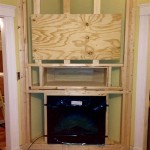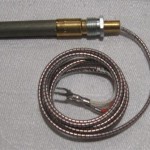Wood Burning Fireplace Insert With Electric Blower: A Comprehensive Overview
A wood-burning fireplace insert with an electric blower represents a significant upgrade to traditional open fireplaces. It offers enhanced heating efficiency, improved safety, and greater control over the combustion process. This type of insert transforms an existing drafty fireplace into a powerful and efficient heating appliance. Understanding the components, functionalities, and considerations of a wood-burning fireplace insert with an electric blower is crucial for informed decision-making.
The core function of a fireplace insert is to create a closed combustion chamber. This design drastically reduces heat loss up the chimney, a major drawback of traditional fireplaces. Instead of losing a significant portion of the heat generated, the insert radiates it into the room. The electric blower further enhances this process by actively circulating the heated air.
The electric blower, typically located at the lower rear of the insert, draws cool air from the room, passes it over the heated firebox, and then forces the warmed air back into the room. This forced-air circulation significantly increases the heating capacity and distributes the heat more evenly throughout the space. Without the blower, the insert would primarily rely on radiant heat, which is less effective at warming larger areas.
Key Benefits of Wood Burning Fireplace Inserts with Electric Blowers
Numerous advantages are associated with installing a wood-burning fireplace insert equipped with an electric blower. These benefits extend beyond simply providing heat and contribute to overall home comfort and efficiency.
Improved Heating Efficiency: The primary advantage lies in the significant improvement in heating efficiency. Open fireplaces are notoriously inefficient, often losing more heat than they provide. A wood-burning insert can increase the heating efficiency from as low as 10% to as high as 75% or more. This translates to using less wood to achieve the same or greater level of warmth, resulting in cost savings and reduced environmental impact. The electric blower plays a crucial role in maximizing this efficiency by actively distributing the heat, ensuring that it is not concentrated solely in the immediate vicinity of the fireplace.
Enhanced Safety Features: Wood-burning inserts offer improved safety compared to open fireplaces. The closed combustion chamber prevents sparks and embers from escaping into the room, reducing the risk of fire hazards. Many inserts also feature a glass door that further contains the fire and prevents drafts. The controlled combustion environment also minimizes the production of creosote, a flammable substance that can accumulate in the chimney and pose a fire risk. Regular chimney cleaning is still essential, but the reduced creosote buildup contributes to a safer operation.
Greater Control Over Combustion: Fireplace inserts typically include adjustable air controls that allow users to regulate the amount of air entering the firebox. This control enables users to fine-tune the burning rate and heat output. By limiting the air supply, the fire burns slower and produces more heat, while increasing the air supply allows for a quicker, hotter burn. This level of control is not possible with an open fireplace, where the fire burns uncontrolled, often leading to inefficient fuel consumption and inconsistent heat output. The electric blower allows the user to fine-tune the heat distribution, ensuring optimal comfort levels.
Components of a Wood Burning Fireplace Insert with Electric Blower
Understanding the various components of the insert helps to appreciate its functionality and maintenance requirements.
Firebox: This is the main compartment where the wood is burned. It is typically constructed of heavy-duty steel or cast iron to withstand the high temperatures. The firebox is designed to provide efficient combustion and maximize heat transfer.
Glass Door: Most inserts feature a glass door that allows users to view the fire while preventing sparks and embers from escaping. The glass is typically made of high-temperature ceramic that can withstand extreme heat. Some doors also include an air wash system that helps to keep the glass clean by directing a stream of air across its surface.
Air Controls: These controls regulate the amount of air entering the firebox, allowing users to adjust the burning rate and heat output. Typically, there are primary and secondary air controls. Primary air controls regulate the air entering the firebox from below, while secondary air controls regulate the air entering the firebox from above.
Blower: The electric blower is responsible for circulating heated air throughout the room. It is typically located at the lower rear of the insert and draws cool air from the room, passes it over the heated firebox, and then forces the warmed air back into the room.
Chimney Liner: A chimney liner is an essential component of the installation process. It is a stainless steel or aluminum pipe that is inserted into the existing chimney to provide a safe and effective exhaust pathway for the combustion gases. The liner prevents the corrosive gases from damaging the chimney structure and ensures proper draft.
Installation and Maintenance Considerations
Proper installation is crucial for the safe and efficient operation of a wood-burning fireplace insert. It is highly recommended to have the insert installed by a qualified professional who is familiar with local building codes and regulations.
Installation Process: The installation typically involves preparing the fireplace opening, installing the chimney liner, and positioning the insert in the fireplace. The insert is then connected to the chimney liner, and the surround panel is installed to seal off any gaps between the insert and the fireplace opening.
Maintenance Requirements: Regular maintenance is essential to ensure the longevity and optimal performance of the insert. This includes cleaning the glass door, removing ash from the firebox, and inspecting the chimney liner for any signs of damage or creosote buildup. It is recommended to have the chimney professionally cleaned at least once a year, or more frequently if you burn wood regularly.
Wood Selection: The type of wood burned significantly impacts the performance and emissions of the insert. It is important to use seasoned hardwood, which has been dried for at least six months to a year. Seasoned wood burns hotter and cleaner than green wood, producing less smoke and creosote. Avoid burning treated wood, painted wood, or other materials that can release harmful chemicals into the air.
In conclusion, a wood-burning fireplace insert with an electric blower presents a compelling option for homeowners seeking to improve the heating efficiency, safety, and overall functionality of their existing fireplace. By understanding the benefits, components, and considerations associated with this type of insert, individuals can make informed decisions that align with their heating needs and home environment.

Wood Burning Fireplace Inserts 1 Stove Insert Dealer

Napoleon S20i Sch1b3041 Wood Insert With Dual Blower System

Ventis Wood Burning Fireplace Insert With Blower Hei170 Hvacdirect Com

Ventis Hei240 Wood Burning Insert

A Step By Guide To Understanding Fireplace Inserts

Best Fireplace Inserts Of December 2024 Forbes Home

How Fireplace Inserts Work We Love Fire

Fireplace Inserts Everything You Need To Know Full Service Chimney
.aspx?strip=all)
Cost Of Operating A Wood Insert Cord Calculator Regency

Valuxhome 36 In 750 Watt 1500 Black Electric Fireplace Insert Ef33t Hd The Home Depot
Related Posts








